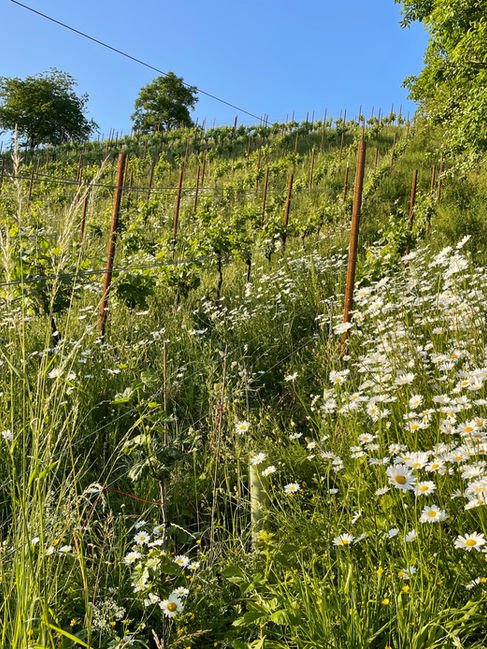FrogLips

Our Vineyard
Our Vineyard is situated in Erpeldange-Bous near Remich and the Moselle river.

The AOP Scheierbierg
We are honoured and proud to have been awarded the AOP Scheierbierg.

Some general explanations on what this means:
Wines of the "AOP - Moselle Luxembourgeoise"
Luxembourg adheres to the AOP Quality label. "AOP" stands for "appellation d'origins protégée" or in English "protected designation of origin". For wine, the generic AOP is "AOP - Moselle Luxembourgoise". There are three sub-labels, namely:
-
"Côtes de" such as for example "Côtes de Remich"
-
"Coteaux de" such as for example "Coteaux de Schengen"
-
"Lieu-Dit" such as for example "Wormeldange Koeppchen"
The AOP "Côtes de"
Harmonious entry level wines:
The wines with the designation of origin «Côtes de» are high calibre, harmonious entry level wines. Fruity, light wines for uncomplicated, daily enjoyment. The yield limit for all cultivars is maximum 100 hectolitres per hectare, except for Elbling and Rivaner (115 hectolitres per hectare).
The AOP "Coteaux de"
Typical premium wines:
Coteaux wines are typical ( in terms of cultivar and region ), classic wines from Luxembourg’s Moselle Valley. These premium wines stem from top-quality vineyards in the cantons of Grevenmacher or Remich. As such, they represent two different types of soil: shell limestone ( Grevenmacher ), and keuper with marl clay ( Remich ). Manually harvested grapes, low yields and careful processing turn the origin into a taste experience.
The AOP "Lieu dit"
Terroir wines:
What are known as terroir wines stem from the best vineyards in Luxembourg’s Moselle Valley. The individual locations are delimited with precision. Here, the quality of a wine is determined by the terroir, the origin. The vineyard, low yields, selective manual harvest, as well as cultivation in harmony with nature are just some criteria for the outstanding quality of these wines.
The AOP Scheierbierg we have been awarded falls in this category.
Our Ecological Commitment




We work the vineyard by ourselves, from the first pruning to harvesting.
The size of the vineyard is small with only 0.5 hectare. This permits us to do all the work by hand. We do not use a tractor, avoiding the prejudicial compacting of the soil.
We apply the principles of bio agriculture with a focus on biodiversity and the preservation of a healthy soil. We do not use any herbicide or any insecticides. We cannot avoid spraying fungicides, notably coper and sulphur, for mildew prevention.
Our vineyard is surrounded by protected biotopes and we strive to keep our vineyard as close to nature as possible. We never plough between the rows and mow only twice a year, so as to preserve biodiversity and permit plants to have flowers for insects, notably bees.
We prune in accordance with the Simonit & Sirch method (https://simonitesirch.com/ ).









